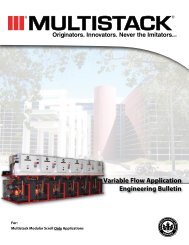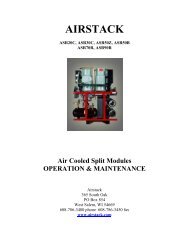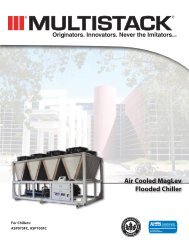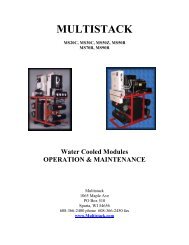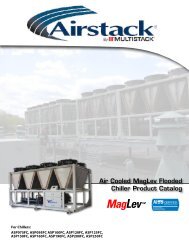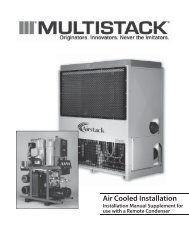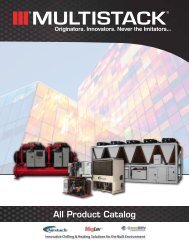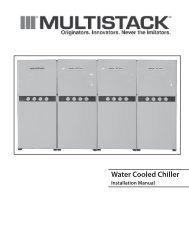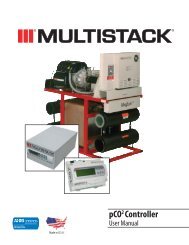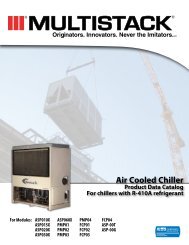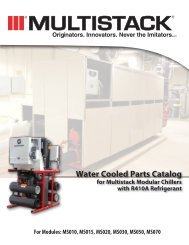Preventative Maintenance - Multistack
Preventative Maintenance - Multistack
Preventative Maintenance - Multistack
Create successful ePaper yourself
Turn your PDF publications into a flip-book with our unique Google optimized e-Paper software.
Brazed plate heat exchangers make each MULTISTACKmodule highly efficient. This side view of module,without cabinetry, shows the location of the heatexchangers.ANNUAL CLEANING PROCEDURE FOR SHUT-DOWN OF MULTISTACK CHILLERSMULTISTACK Chillers utilize Heat Exchangers that differ greatly in design, construction and performance from other types of heat exchangers (e.g., shell andtube design), and have completely different fouling characteristics. For best performance, MULTISTACK recommends taking the first step in fighting fouling:PREVENTION.FACTORS AFFECTING FOULING• Temperature • Velocity• Surface Finish • Turbulence• Flow Distribution • Water QualityTYPES OF FOULING: Scaling and ParticulateScalingScaling is caused by substances dissolved in the heat transfer medium which deposit on the heat transfer surface. To prevent or minimize scaling, a proper watertreatment program designed by a competent water treatment professional is recommended.ParticulateParticulate fouling is caused by solids in the heat transfer medium such as mud, silt, sand or other particles. Particulate fouling is affected by velocity, distributionof the medium, roughness of the heat transfer surface and the size of the particles. Particles can enter the heat exchanger through old rusty pipes or through thecooling tower.To reduce particulate fouling, MULTISTACK recommends a good filtration system (i.e., strainers, sand filters, mechanical/centrifugal separators).Note: A Teflon Coated Stainless Steel cartridge filter for the evaporator and condenser header is suppliedwith all MULTISTACK modules to remove particles. If required, other types of filtration systems can beadded to meet specific filtration parameters.LAMINAR VS. TURBULENT FLOWThe evaporator system is shown in this illustration.A complex series of channels within each heatexchanger gives rise to vigorous turbulence,ensuring maximum heat transfer.LaminarWhen a fluid passes through a tube the greatest velocity is at the center of the tube. The tube wall has no turbulence to keep particles in the fluid in suspension.These particles are allowed to precipitate out and collect on the tube wall which causes fouling of the heat transfer surface. Conventional types of heat exchangersare very sensitive to low velocities and easily get into he laminar region.2



